Ji Feng
NeuralSCF: Neural network self-consistent fields for density functional theory
Jun 22, 2024Abstract:Kohn-Sham density functional theory (KS-DFT) has found widespread application in accurate electronic structure calculations. However, it can be computationally demanding especially for large-scale simulations, motivating recent efforts toward its machine-learning (ML) acceleration. We propose a neural network self-consistent fields (NeuralSCF) framework that establishes the Kohn-Sham density map as a deep learning objective, which encodes the mechanics of the Kohn-Sham equations. Modeling this map with an SE(3)-equivariant graph transformer, NeuralSCF emulates the Kohn-Sham self-consistent iterations to obtain electron densities, from which other properties can be derived. NeuralSCF achieves state-of-the-art accuracy in electron density prediction and derived properties, featuring exceptional zero-shot generalization to a remarkable range of out-of-distribution systems. NeuralSCF reveals that learning from KS-DFT's intrinsic mechanics significantly enhances the model's accuracy and transferability, offering a promising stepping stone for accelerating electronic structure calculations through mechanics learning.
Soft Gradient Boosting Machine
Jun 07, 2020



Abstract:Gradient Boosting Machine has proven to be one successful function approximator and has been widely used in a variety of areas. However, since the training procedure of each base learner has to take the sequential order, it is infeasible to parallelize the training process among base learners for speed-up. In addition, under online or incremental learning settings, GBMs achieved sub-optimal performance due to the fact that the previously trained base learners can not adapt with the environment once trained. In this work, we propose the soft Gradient Boosting Machine (sGBM) by wiring multiple differentiable base learners together, by injecting both local and global objectives inspired from gradient boosting, all base learners can then be jointly optimized with linear speed-up. When using differentiable soft decision trees as base learner, such device can be regarded as an alternative version of the (hard) gradient boosting decision trees with extra benefits. Experimental results showed that, sGBM enjoys much higher time efficiency with better accuracy, given the same base learner in both on-line and off-line settings.
Learning to Confuse: Generating Training Time Adversarial Data with Auto-Encoder
May 22, 2019


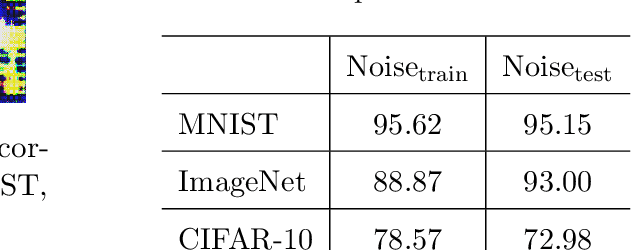
Abstract:In this work, we consider one challenging training time attack by modifying training data with bounded perturbation, hoping to manipulate the behavior (both targeted or non-targeted) of any corresponding trained classifier during test time when facing clean samples. To achieve this, we proposed to use an auto-encoder-like network to generate the pertubation on the training data paired with one differentiable system acting as the imaginary victim classifier. The perturbation generator will learn to update its weights by watching the training procedure of the imaginary classifier in order to produce the most harmful and imperceivable noise which in turn will lead the lowest generalization power for the victim classifier. This can be formulated into a non-linear equality constrained optimization problem. Unlike GANs, solving such problem is computationally challenging, we then proposed a simple yet effective procedure to decouple the alternating updates for the two networks for stability. The method proposed in this paper can be easily extended to the label specific setting where the attacker can manipulate the predictions of the victim classifiers according to some predefined rules rather than only making wrong predictions. Experiments on various datasets including CIFAR-10 and a reduced version of ImageNet confirmed the effectiveness of the proposed method and empirical results showed that, such bounded perturbation have good transferability regardless of which classifier the victim is actually using on image data.
GP-RVM: Genetic Programing-based Symbolic Regression Using Relevance Vector Machine
Aug 26, 2018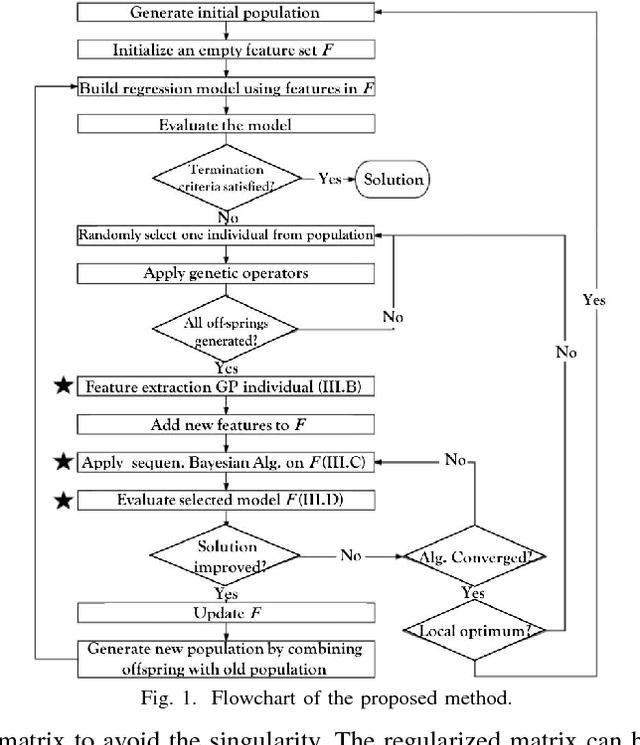
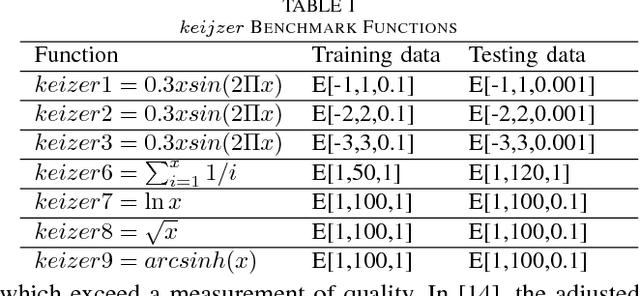
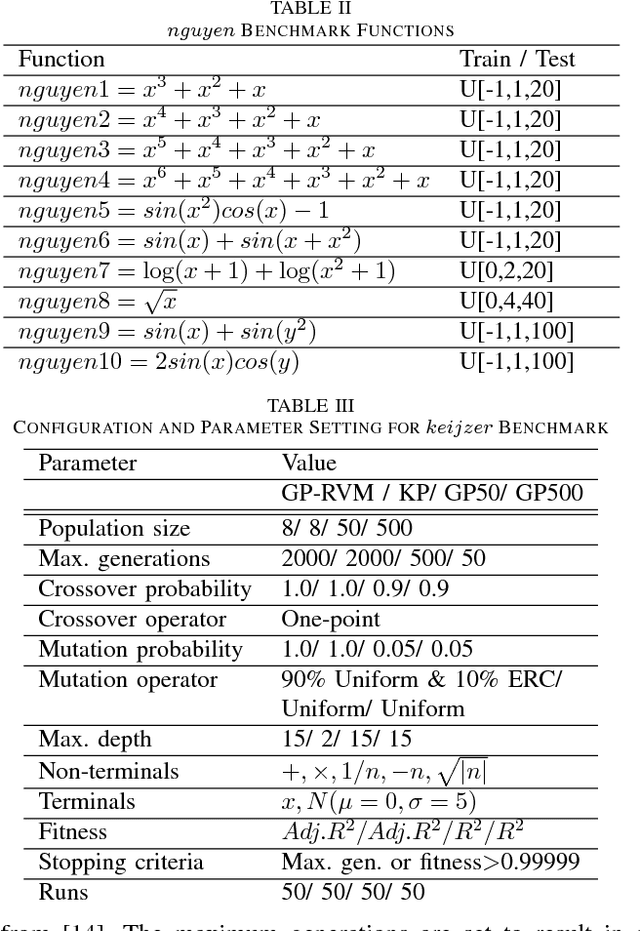

Abstract:This paper proposes a hybrid basis function construction method (GP-RVM) for Symbolic Regression problem, which combines an extended version of Genetic Programming called Kaizen Programming and Relevance Vector Machine to evolve an optimal set of basis functions. Different from traditional evolutionary algorithms where a single individual is a complete solution, our method proposes a solution based on linear combination of basis functions built from individuals during the evolving process. RVM which is a sparse Bayesian kernel method selects suitable functions to constitute the basis. RVM determines the posterior weight of a function by evaluating its quality and sparsity. The solution produced by GP-RVM is a sparse Bayesian linear model of the coefficients of many non-linear functions. Our hybrid approach is focused on nonlinear white-box models selecting the right combination of functions to build robust predictions without prior knowledge about data. Experimental results show that GP-RVM outperforms conventional methods, which suggest that it is an efficient and accurate technique for solving SR. The computational complexity of GP-RVM scales in $O( M^{3})$, where $M$ is the number of functions in the basis set and is typically much smaller than the number $N$ of training patterns.
Multi-Layered Gradient Boosting Decision Trees
May 31, 2018



Abstract:Multi-layered representation is believed to be the key ingredient of deep neural networks especially in cognitive tasks like computer vision. While non-differentiable models such as gradient boosting decision trees (GBDTs) are the dominant methods for modeling discrete or tabular data, they are hard to incorporate with such representation learning ability. In this work, we propose the multi-layered GBDT forest (mGBDTs), with an explicit emphasis on exploring the ability to learn hierarchical representations by stacking several layers of regression GBDTs as its building block. The model can be jointly trained by a variant of target propagation across layers, without the need to derive back-propagation nor differentiability. Experiments and visualizations confirmed the effectiveness of the model in terms of performance and representation learning ability.
Distributed Deep Forest and its Application to Automatic Detection of Cash-out Fraud
May 27, 2018



Abstract:Internet companies are facing the need of handling large scale machine learning applications in a daily basis, and distributed system which can handle extra-large scale tasks is needed. Deep forest is a recently proposed deep learning framework which uses tree ensembles as its building blocks and it has achieved highly competitive results on various domains of tasks. However, it has not been tested on extremely large scale tasks. In this work, based on our parameter server system and platform of artificial intelligence, we developed the distributed version of deep forest with an easy-to-use GUI. To the best of our knowledge, this is the first implementation of distributed deep forest. To meet the need of real-world tasks, many improvements are introduced to the original deep forest model. We tested the deep forest model on an extra-large scale task, i.e., automatic detection of cash-out fraud, with more than 100 millions of training samples. Experimental results showed that the deep forest model has the best performance according to the evaluation metrics from different perspectives even with very little effort for parameter tuning. This model can block fraud transactions in a large amount of money \footnote{detail is business confidential} each day. Even compared with the best deployed model, deep forest model can additionally bring into a significant decrease of economic loss.
Deep Forest
May 14, 2018



Abstract:Current deep learning models are mostly build upon neural networks, i.e., multiple layers of parameterized differentiable nonlinear modules that can be trained by backpropagation. In this paper, we explore the possibility of building deep models based on non-differentiable modules. We conjecture that the mystery behind the success of deep neural networks owes much to three characteristics, i.e., layer-by-layer processing, in-model feature transformation and sufficient model complexity. We propose the gcForest approach, which generates \textit{deep forest} holding these characteristics. This is a decision tree ensemble approach, with much less hyper-parameters than deep neural networks, and its model complexity can be automatically determined in a data-dependent way. Experiments show that its performance is quite robust to hyper-parameter settings, such that in most cases, even across different data from different domains, it is able to get excellent performance by using the same default setting. This study opens the door of deep learning based on non-differentiable modules, and exhibits the possibility of constructing deep models without using backpropagation.
AutoEncoder by Forest
Sep 26, 2017



Abstract:Auto-encoding is an important task which is typically realized by deep neural networks (DNNs) such as convolutional neural networks (CNN). In this paper, we propose EncoderForest (abbrv. eForest), the first tree ensemble based auto-encoder. We present a procedure for enabling forests to do backward reconstruction by utilizing the equivalent classes defined by decision paths of the trees, and demonstrate its usage in both supervised and unsupervised setting. Experiments show that, compared with DNN autoencoders, eForest is able to obtain lower reconstruction error with fast training speed, while the model itself is reusable and damage-tolerable.
Extend natural neighbor: a novel classification method with self-adaptive neighborhood parameters in different stages
Dec 07, 2016
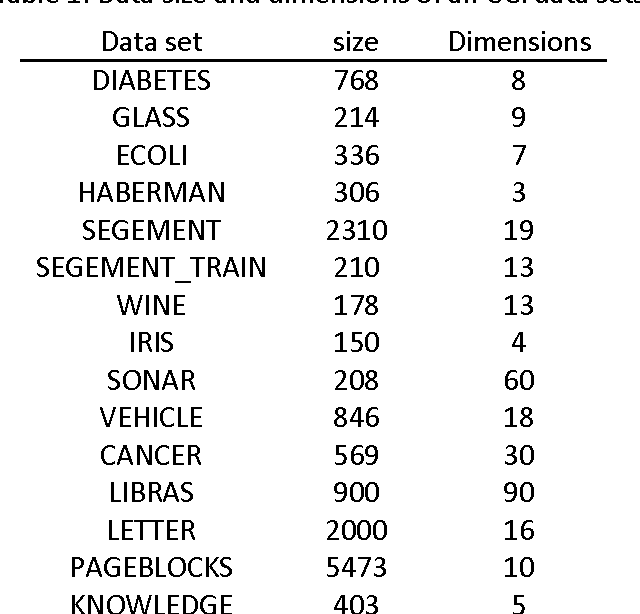
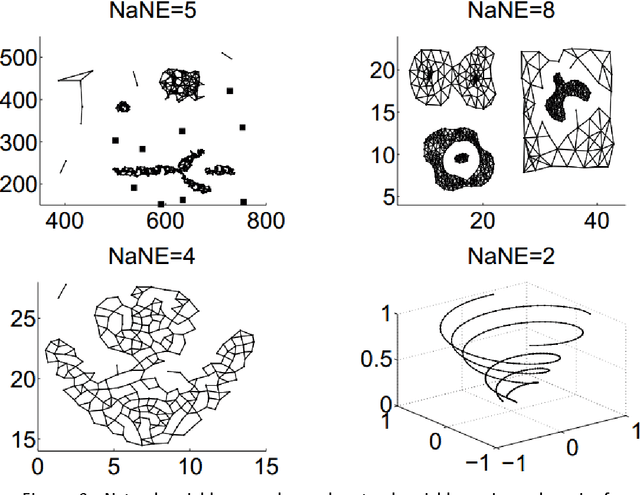
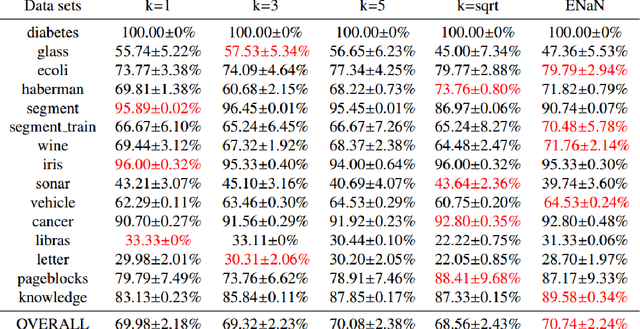
Abstract:Various kinds of k-nearest neighbor (KNN) based classification methods are the bases of many well-established and high-performance pattern-recognition techniques, but both of them are vulnerable to their parameter choice. Essentially, the challenge is to detect the neighborhood of various data sets, while utterly ignorant of the data characteristic. This article introduces a new supervised classification method: the extend natural neighbor (ENaN) method, and shows that it provides a better classification result without choosing the neighborhood parameter artificially. Unlike the original KNN based method which needs a prior k, the ENaNE method predicts different k in different stages. Therefore, the ENaNE method is able to learn more from flexible neighbor information both in training stage and testing stage, and provide a better classification result.
 Add to Chrome
Add to Chrome Add to Firefox
Add to Firefox Add to Edge
Add to Edge